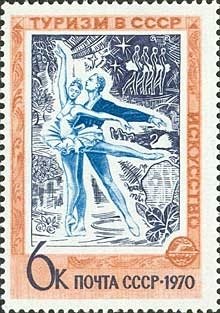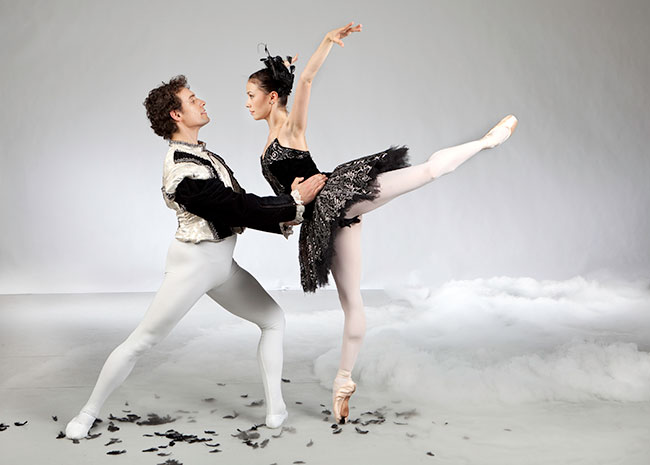Stamp: Scene from ballet "Swan lake" (P. I. Tchaikovsky) (Soviet Union, USSR 1970)
Scene from ballet "Swan lake" (P. I. Tchaikovsky) (Soviet Union, USSR 1970)
29 November (Soviet Union, USSR ) within release Tourism in USSR goes into circulation Stamp Scene from ballet "Swan lake" (P. I. Tchaikovsky) face value 6 Russian kopek
| Stamp Scene from ballet "Swan lake" (P. I. Tchaikovsky) in catalogues | |
|---|---|
| Michel: | Mi:SU 3813 |
| Yvert et Tellier: | Yt:SU 3671 |
Stamp is vertical format.
the word ""ballet"" in Spanish there i does damage to the eye. Ballet as all the terminology of the classic dnaza is French and is used universally, i.e. Ballet in English, in Spanish, in German and in all languages."Also in the issue Tourism in USSR:
- Stamp - St. Basil's Cathedral (Moscow) face value 4;
- Stamp - Scene from ballet "Swan lake" (P. I. Tchaikovsky) face value 6;
- Stamp - Sika Deer (Cervus nippon) - Hunting face value 10;
- Stamp - Souvenir handicrafts face value 12;
- Stamp - Sculpture "Swords into ploughshares" (Museums) face value 14;
Stamp Scene from ballet "Swan lake" (P. I. Tchaikovsky) it reflects the thematic directions:
Music is an art form and cultural activity whose medium is sound organized in time. The common elements of music are pitch (which governs melody and harmony), rhythm (and its associated concepts tempo, meter, and articulation), dynamics (loudness and softness), and the sonic qualities of timbre and texture (which are sometimes termed the "color" of a musical sound). Different styles or types of music may emphasize, de-emphasize or omit some of these elements. Music is performed with a vast range of instruments and vocal techniques ranging from singing to rapping; there are solely instrumental pieces, solely vocal pieces (such as songs without instrumental accompaniment) and pieces that combine singing and instruments. The word derives from Greek μουσική (mousike; "art of the Muses"). In its most general form, the activities describing music as an art form or cultural activity include the creation of works of music (songs, tunes, symphonies, and so on), the criticism of music, the study of the history of music, and the aesthetic examination of music. Ancient Greek and Indian philosophers defined music as tones ordered horizontally as melodies and vertically as harmonies. Common sayings such as "the harmony of the spheres" and "it is music to my ears" point to the notion that music is often ordered and pleasant to listen to.
Dance is an art form, often classified as a sport, consisting of sequences of body movements with aesthetic and often symbolic value, either improvised or purposefully selected. Dance can be categorized and described by its choreography, by its repertoire of movements or by its historical period or place of origin. Dance is typically performed with musical accompaniment, and sometimes with the dancer simultaneously using a musical instrument themselves.
Ballet (French: [balɛ]) is a type of performance dance that originated during the Italian Renaissance in the fifteenth century and later developed into a concert dance form in France and Russia. It has since become a widespread and highly technical form of dance with its own vocabulary. Ballet has been influential globally and has defined the foundational techniques which are used in many other dance genres and cultures. Various schools around the world have incorporated their own cultures. As a result, ballet has evolved in distinct ways



